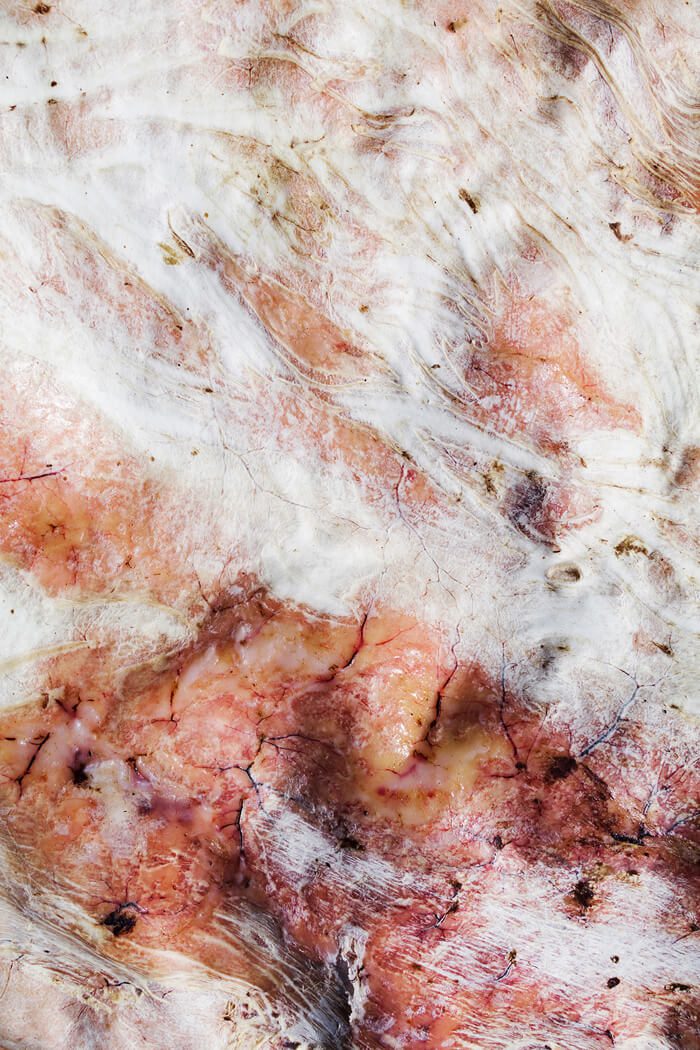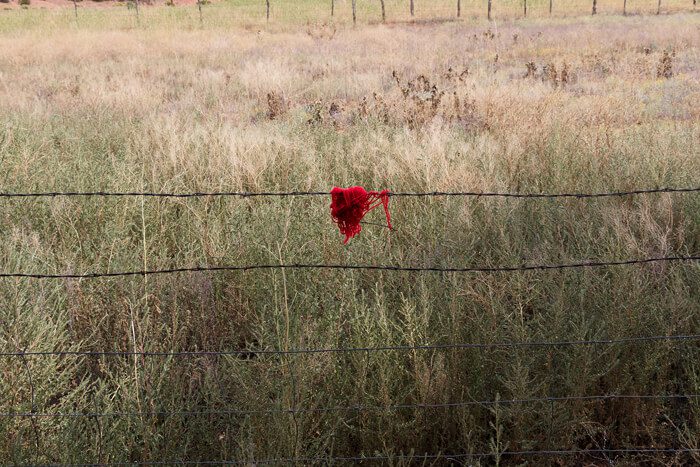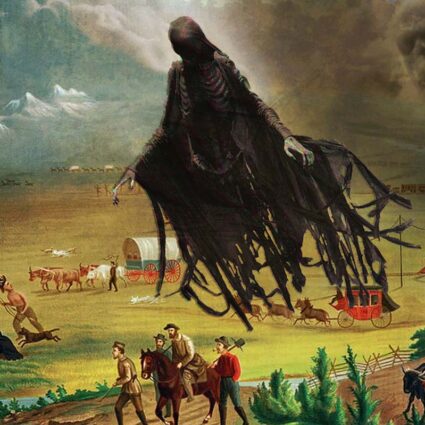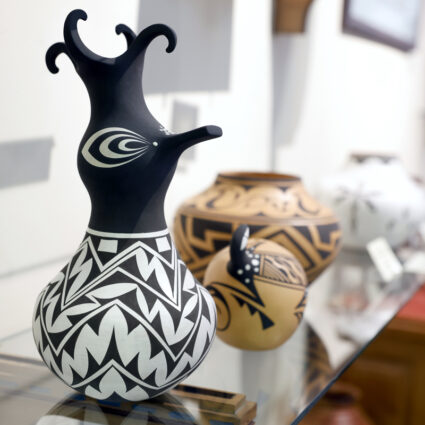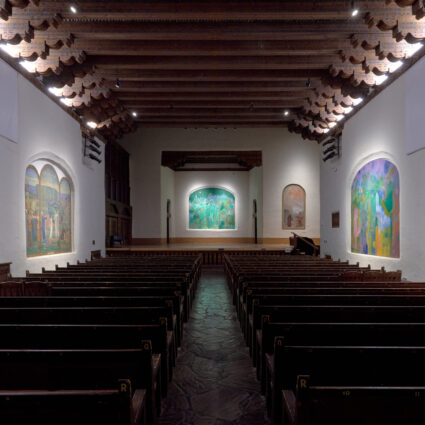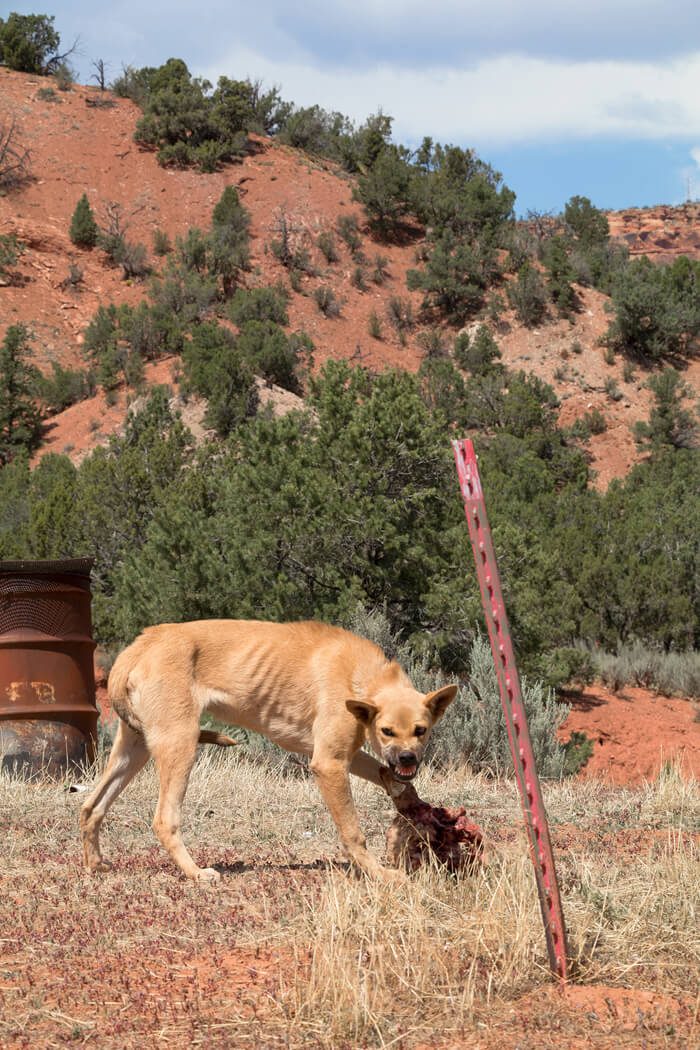
Rapheal Begay: Lest We Forget
August 2 – September 22, 2019
Trapdoor Projects, Albuquerque
I had two separate and not equal reactions to seeing Rapheal Begay’s exhibition, Lest We Forget.
My first impression was that Begay has something powerful to say, but he hasn’t entirely figured out how to say it. Maybe these are works in progress, I thought. My second reaction, after the show, was an almost sensory experience of making the connections between the different aspects of Begay’s home and life in the Navajo Nation that his work represents.
Rapheal Begay is a Diné photographer and curator from Window Rock, Arizona, (the capital of the Navajo Nation) currently showing his work at Trapdoor Projects, near downtown Albuquerque. The medium is photography, but the methods are strikingly conceptual, requiring viewers to finish the work in their minds. His work evokes memories of family, as well as harshly beautiful landscapes and the animals who populate them—especially sheep—in the Navajo Nation.
On the left, near the entrance of the gallery, were five small framed images. The frames, donated by Begay’s family, are lovingly annotated on title cards. The photographic images in their frames are small and intimate. Of these, one named Shimasani spoke to me the most; the title card describes it as a “xerox copy sourced from mother’s personal collection and repurposed from childhood Award for Academic Excellence from Hunter’s Point Boarding School (1998).” It shows a young Indigenous woman, facing the camera, wearing a long dress and leather jacket. She is standing in front of a horse-drawn cart with blankets stacked on it. Behind the cart is a pine tree. Here, the viewer gets a sense of a recent past and the lure of family history, of distinct personalities within that history.
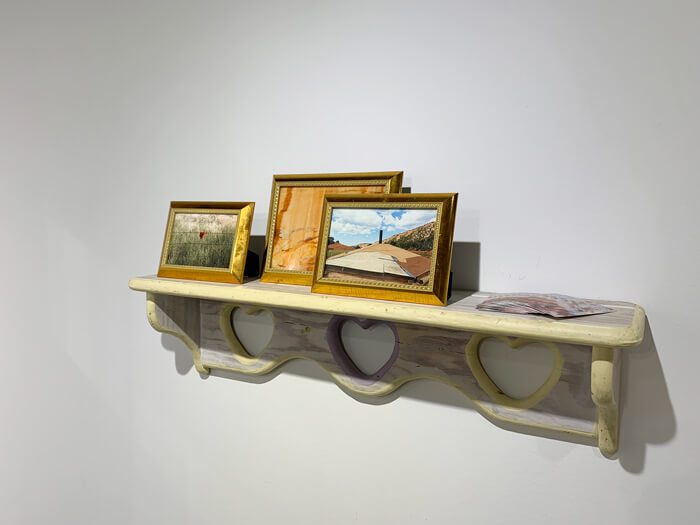
The most immediately gripping image in the show is Rez-Dog, an ink-jet print, large by comparison, about thirty by forty inches wide. In it, a yellow dog stands over a chunk of another animal’s ribcage, its face in a snarl, its skinny ribs jutting, tail between its legs. Near the dog is a rusted barrel, and behind it climbs a red hill dotted with trees. The dog’s mixture of fear and anger is instantly recognizable. The viewer needs no context to understand it.
Other pieces, however, could use context. I contemplated two images separated by a corner. One stood out: it was a flat blue square in a beige wooden frame. It could have been purely abstract. Since I couldn’t understand it, I turned to the other large piece opposite it, which seemed to be a close-up photo of an inner organ with white strands drawn over it. I asked the Trapdoor curator, Katie Doyle, about the first piece, and she said it was the sky over Window Rock. The featureless blue panel, titled Pure Perspective, now appeared expansive and remote. The other piece, she said, was the inner lining of a sheep’s intestine with wool strewn over it, called Internal. The more I looked, the more the piece appeared like a visceral map of some landscape: the dark veins like rivers, and the red flesh and yellow fat like the topography of the earth. In the immediacy of the moment, the two pieces seemed unrelated to each other. Later, they stayed in my thoughts, and I saw in them a relationship both gritty and mythic.
In an act of generosity, Lest We Forget gives us the sights, textures, and memories of the artist’s home. After seeing the show, I went to my own home, and in a burst of something like synesthesia, all the disparate pieces came together. Images from the exhibition seemed to return to me from all sides. Like all good artists, Rapheal Begay makes you work for the experience. I could almost smell the sheep.
